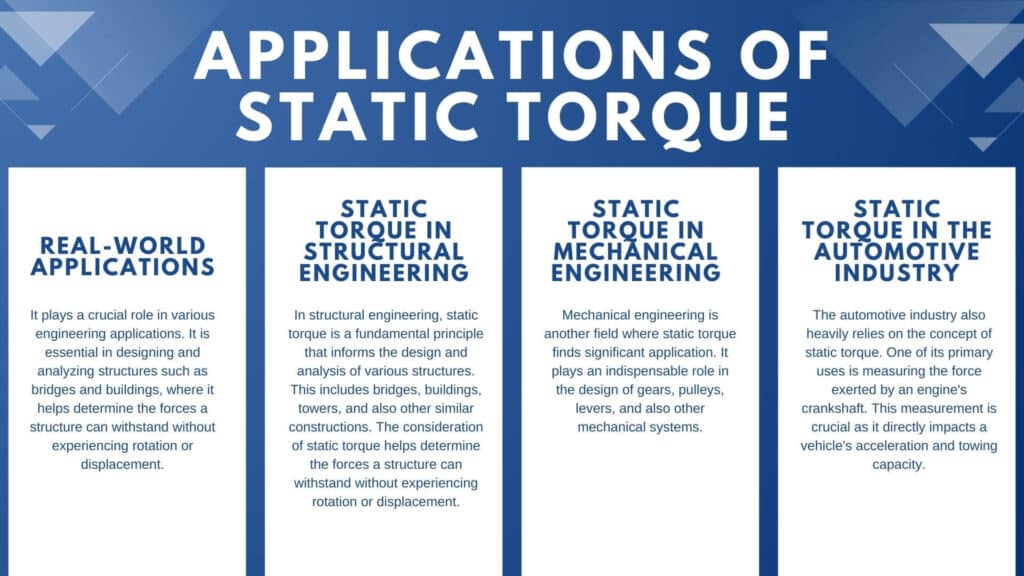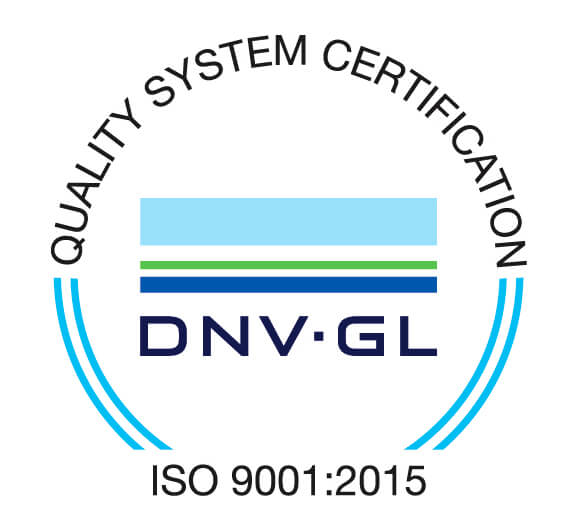Static torque is an essential concept in engineering and mechanics, as it measures the force that must be applied to an object to cause it to rotate. It can calculate the power or energy required for certain tasks, such as lifting heavy objects or operating machinery.
This article will explore static torque and how it can be measured. We will also discuss some examples of its application in real-world scenarios and consider its implications for various fields. Finally, we will examine how static torque affects different types of materials differently. Engineers and technicians can use these concepts more effectively by understanding them better.
Table of Contents
ToggleWhat is Torque?

Torque, also called moment or moment of force, is a measure of the force that can cause an object to rotate about an axis. It is fundamental in engineering, physics, and many other scientific fields. In essence, torque quantifies the capacity of a force to twist or turn an object.
Historical Background of Torque
The concept of torque dates back to the ancient Greeks, who used rudimentary levers and pulleys to lift heavy objects. Archimedes famously stated, “Give me a place to stand and a lever long enough, and I will move the world.” This statement underscores the core principle of torque.
The formal study and quantification of torque began with Sir Isaac Newton’s laws of motion in the 17th century. His second law (Force = Mass x Acceleration) was adapted to rotational motion, leading to the torque equation: Torque = Force x Distance.
Static Torque: The Mechanics
Static torque refers to the torque applied to a stationary object. Unlike dynamic torque, which involves rotating or moving objects, static torque deals with objects at rest.
The equation for calculating static torque (τ) is:
T = rFsinθ
Where:
- T is the amount of torque.
- r is the distance from the rotational axis to the point where force is applied
- F is the force applied.
- θ is the angle between the direction of force and the line extending from the axis of rotation to the point where pressure is applied
In this diagram, the force (F) is applied at a distance (r) from the pivot point, generating a torque (T). So, Consider the example of a wrench being used to loosen a bolt. The force (F) is applied with the wrench at a distance (r) from the center of the bolt. This force generates a torque (T) equal to r x F x sin θ, where θ is the angle between the direction of force and the line extending from the center of the bolt to where force is applied.
Applications of Static Torque
It has a wide range of applications in many different fields. It can calculate the power required for lifting heavy objects, operating machinery, or turning screws. In engineering, it is used to measure rotational forces and moments.

Real-World Applications
It plays a crucial role in various engineering applications. It is essential in designing and analyzing structures such as bridges and buildings, where it helps determine the forces a structure can withstand without experiencing rotation or displacement.
Static Torque in Structural Engineering
In structural engineering, static torque is a fundamental principle that informs the design and analysis of various structures. This includes bridges, buildings, towers, and also other similar constructions. The consideration of static torque helps determine the forces a structure can withstand without experiencing rotation or displacement.
For instance, in bridge design, engineers must calculate the static torque produced by the bridge’s weight and additional loads like vehicles, pedestrians, and even environmental factors such as wind or earthquakes. By understanding these forces, engineers can ensure the stability and safety of the bridge under different load conditions.
Static Torque in Mechanical Engineering
Mechanical engineering is another field where static torque finds significant application. It plays an indispensable role in the design of gears, pulleys, levers, and also other mechanical systems.
For example, engineers must consider the static torques produced during operation when designing a gear system. This involves determining the forces applied at different points on the gear teeth, which can affect the gear’s rotational speed, power transmission, and overall performance.
Static Torque in the Automotive Industry
The automotive industry also heavily relies on the concept of static torque. One of its primary uses is measuring the force exerted by an engine’s crankshaft. This measurement is crucial as it directly impacts a vehicle’s acceleration and towing capacity.
Moreover, understanding static torque is essential for designing efficient and powerful electric motors in electric vehicles. As the automotive industry continues to evolve towards more sustainable solutions, static torque’s importance in this field will likely increase even further.
The Centrality of Static Torque in Current Engineering Practices
Static torque remains a cornerstone in modern engineering. It forms the backbone of the design and functionality of various mechanical systems, ranging from rudimentary hand tools to intricate industrial machinery. Moreover, as the sphere of technology continues to expand and push the limits of innovation, the comprehension and application of static torque will indubitably be crucial.
For instance, in manufacturing, static torque is fundamental for operating and maintaining machinery. It helps engineers understand how much force a machine needs to perform a particular task without causing unnecessary strain or damage. This understanding helps enhance the efficiency, safety, and also longevity of machines.
Future Applications of Static Torque
Looking ahead, the importance of understanding static torque extends far beyond its current applications. It holds vast potential for future advancements in several cutting-edge fields.
Robotics
In robotics, grasping the concept of static torque can contribute to building more precise and efficient robots. For instance, robotic arms that need to lift or move objects require an understanding of static torque to prevent overexertion and to ensure smooth, controlled movements.
Space Exploration
It also holds exciting possibilities for space exploration. Designing spacecraft and rovers involves careful consideration of static torque, especially when these vehicles need to operate tools or navigate challenging terrains on other planets. A nuanced understanding of static torque can help create more reliable and resourceful exploration equipment.
Renewable Energy Technologies
In renewable energy technologies, particularly wind turbines, static torque plays a pivotal role. The design and efficiency of wind turbines are directly influenced by static torque, which affects how effectively the turbines can convert wind energy into electrical energy. A better comprehension of static torque can lead to the development of more efficient, sustainable energy solutions.
Streamline Torque Measurements Usings a Low-code Platform
If your business relies on precise static torque measurements, using a high-quality torque wrench can greatly enhance accuracy and efficiency. DATAMYTE offers advanced torque measurement solutions, including the LightStar™ Torque Wrench, designed to provide reliable and repeatable results. This tool ensures precise digital torque readings, allowing you to maintain quality standards and comply with industry regulations. With its user-friendly interface and data storage capabilities, the DATAMYTE LightStar™ Torque Wrench simplifies measurement tracking and analysis, reducing errors and improving efficiency.
Additionally, DATAMYTE supports Layered Process Audits (LPA), helping businesses identify and address potential quality issues before they escalate. With DATAMYTE’s Torque Wrench, you have a powerful solution for streamlining your torque measurement process. Book a demo today to learn more!
Conclusion
Static torque is a fundamental concept that permeates many areas of engineering. Its understanding is essential for the analysis and design of current engineering applications and for developing future technologies. Businesses can easily streamline their torque measurements by understanding the concept of static torque and leveraging the latest low-code platforms and hardware tools. With DATAMYTE, you have a comprehensive solution for improving your torque measurement system. Get started today!



